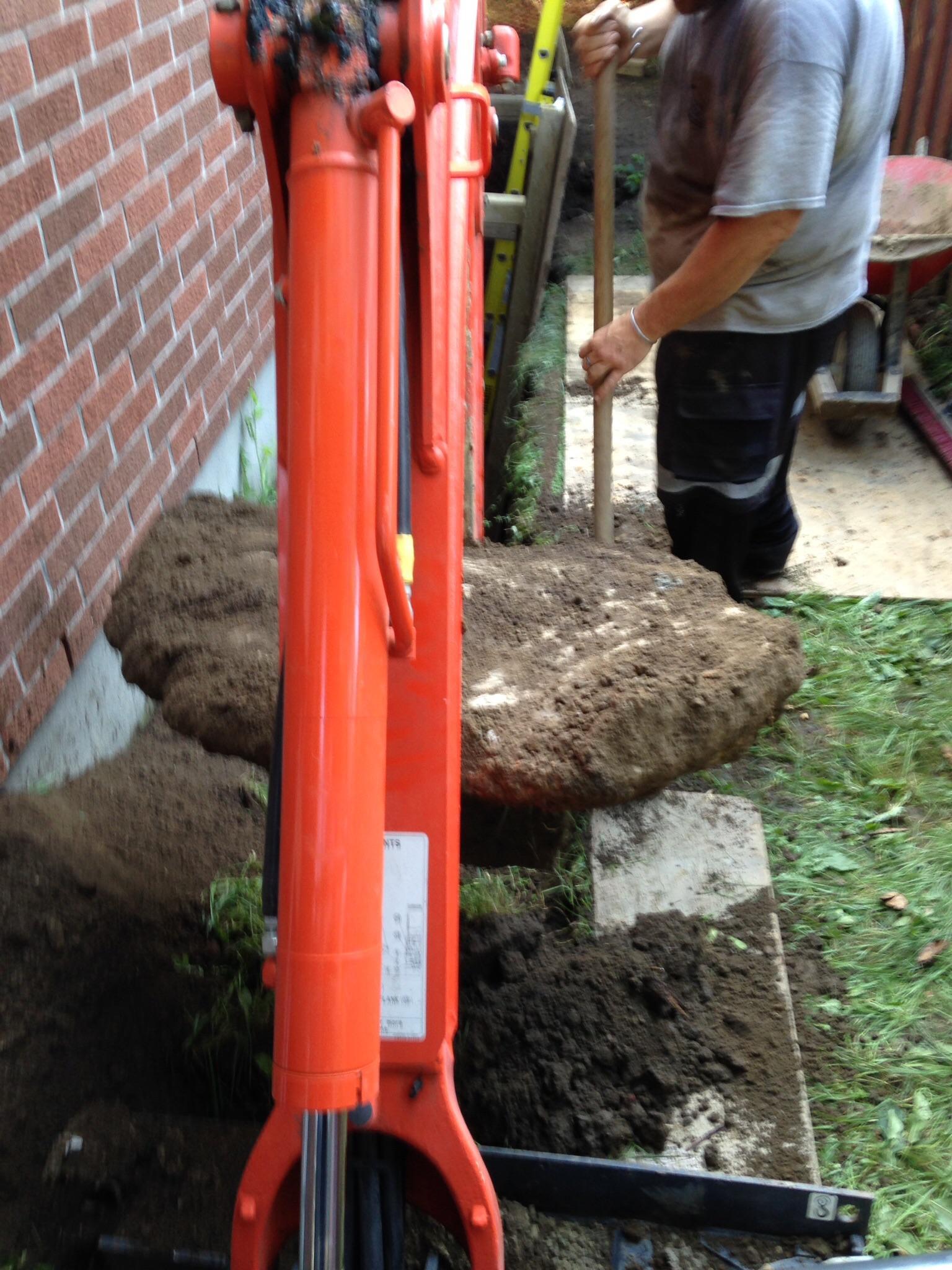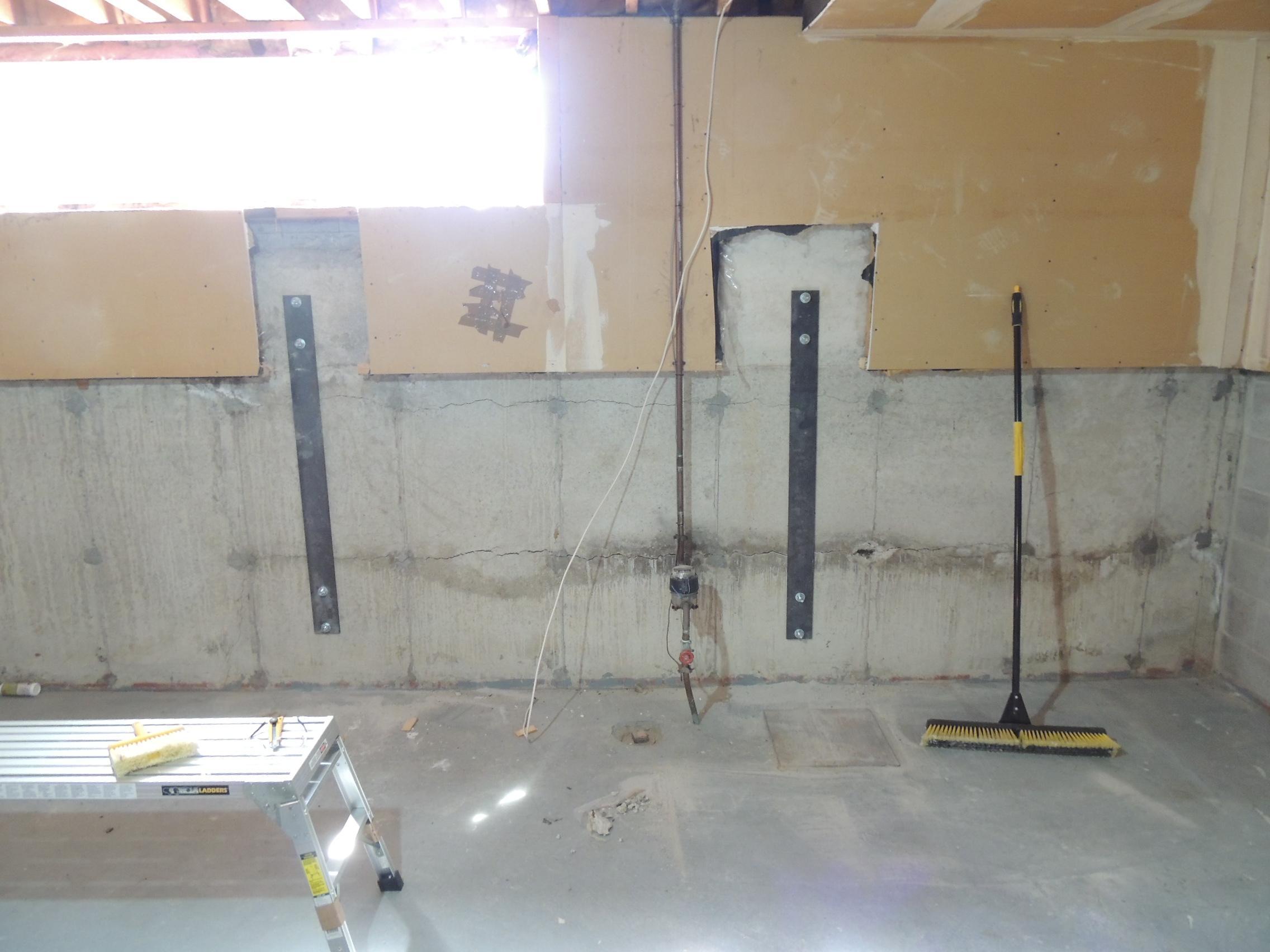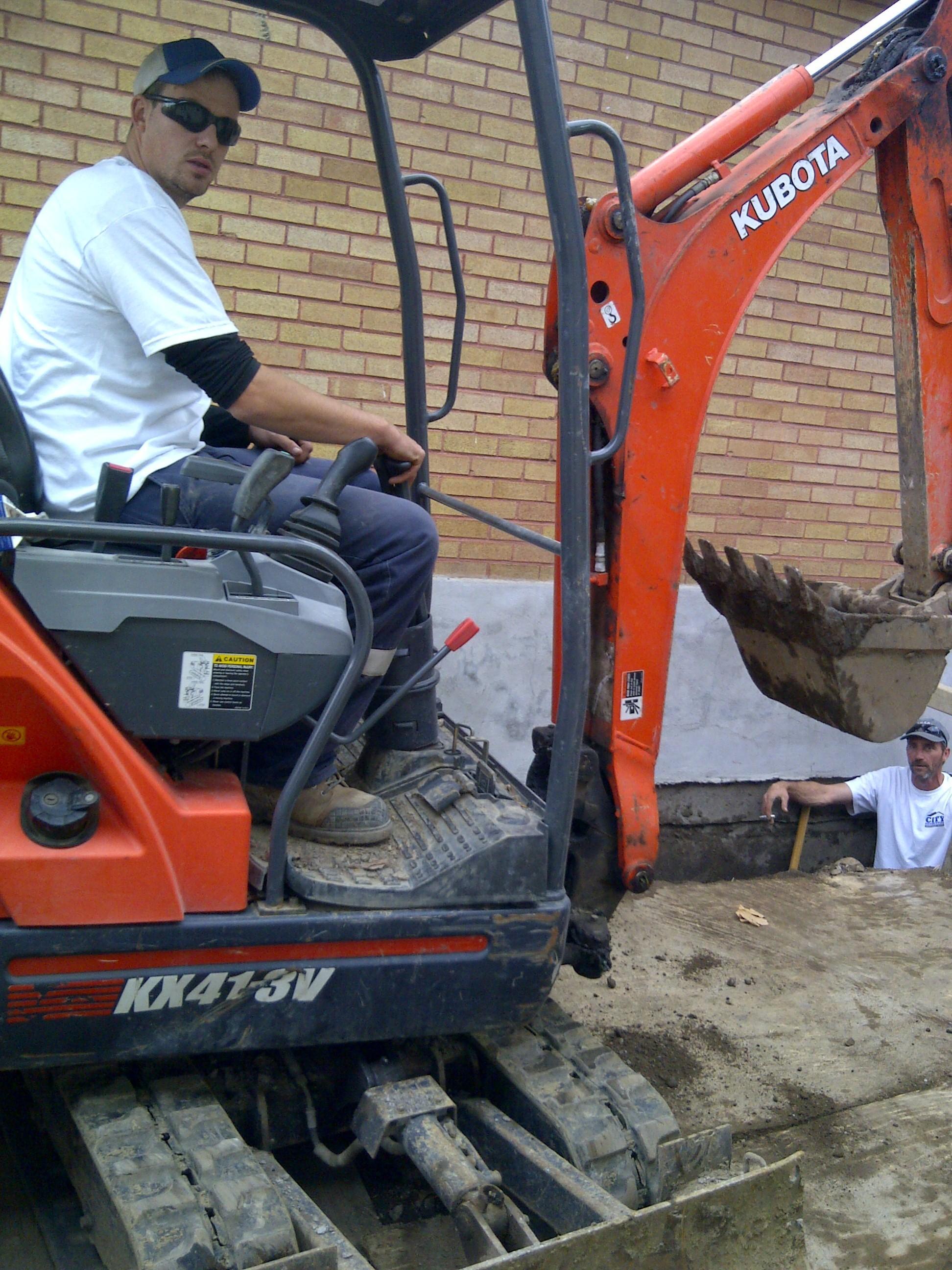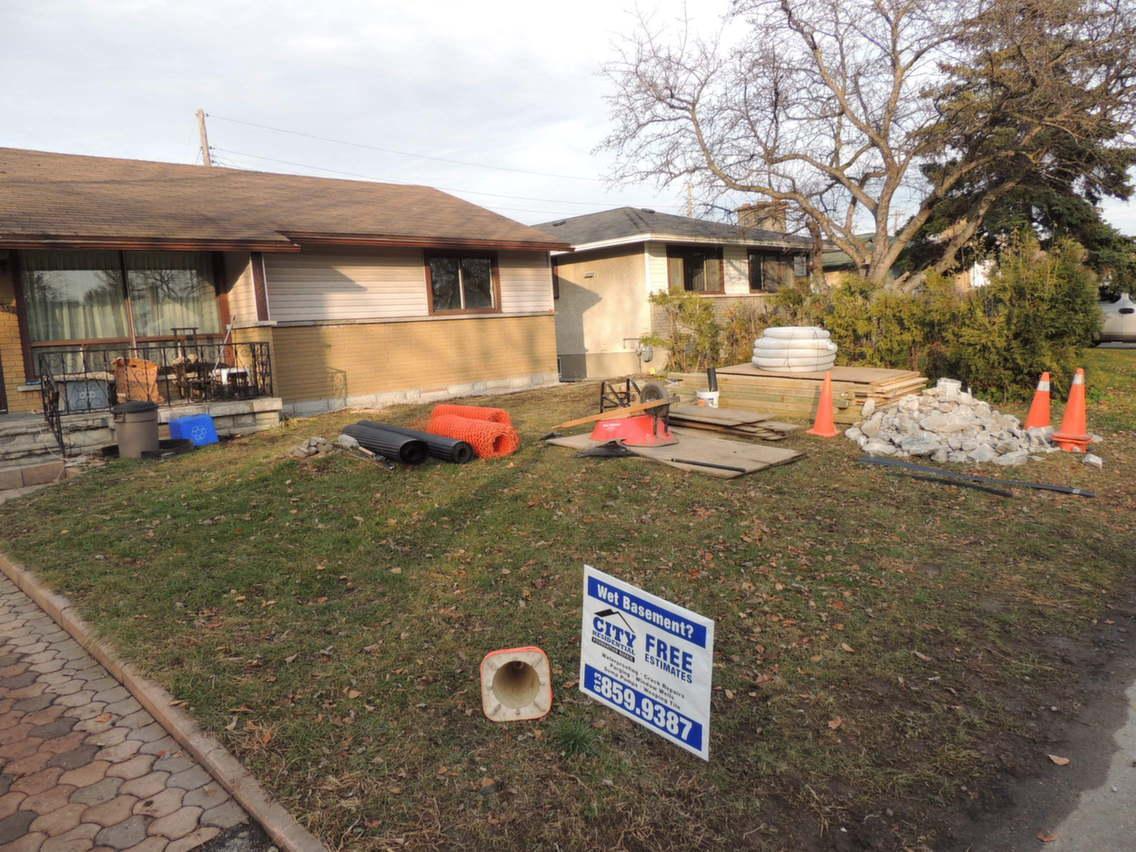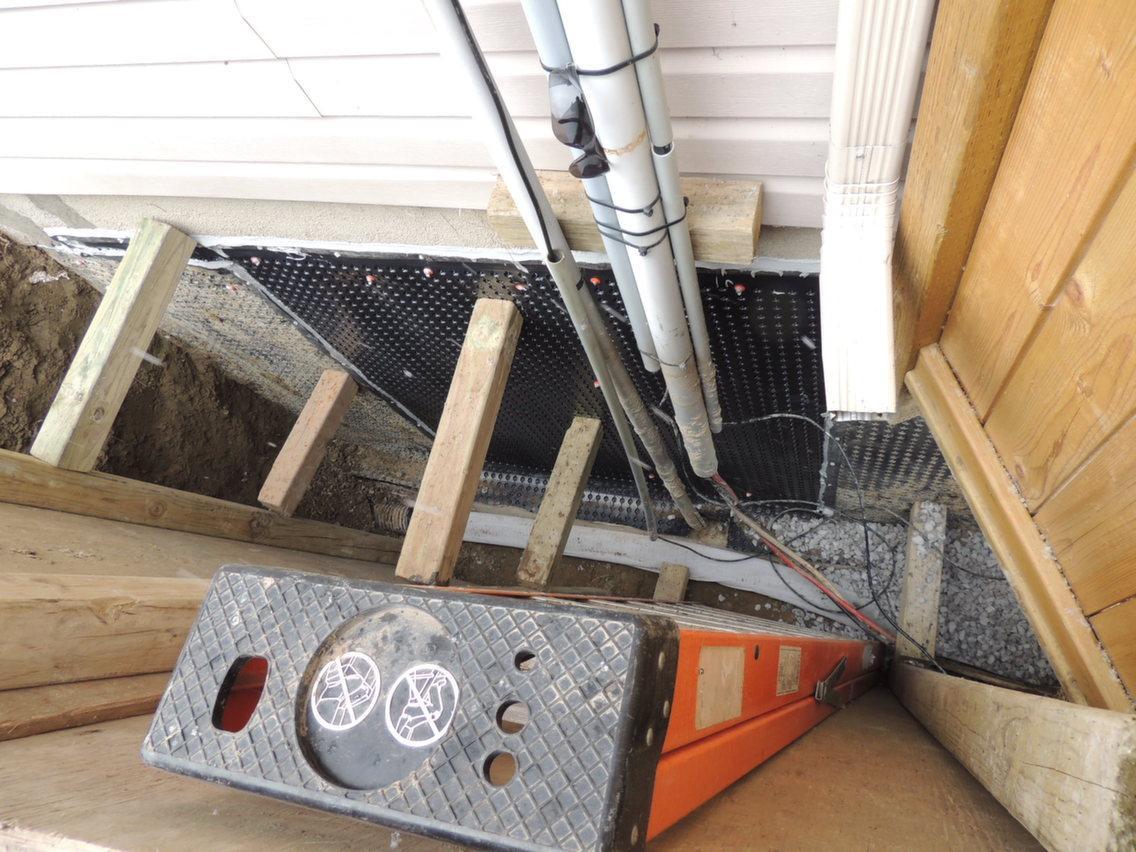CRFR's Tips And Answers To FAQ's
The Outside of Your Home is the First Line of Defense
We all want our houses to keep us warm in the winter, cool in the summer, and dry all year round. So when it comes to your home, you need to ensure that the maintenance of the roof, siding, and foundation are your top priorities. Bryan Baeumler, host of Disaster DIY and House of Bryan on HGTV, says that maintaining the exterior of your home may not be as exciting or sexy as a new kitchen, but it protects your investment.According to Baeumler "If your foundation is leaking, there is only one way to fix it properly, and that’s to dig and waterproof it properly from the outside. There are products available to “waterproof” foundation walls from the inside, but they don’t remove the water that’s already inside the block or foundation wall. If you have water leaking into the basement through the foundation walls, it’s time to dig. Period.”
At City Residential Foundation Repair, this has always been out philosophy! If you have water in your basement, we will identify the cause of the wet basement, fix the cracked foundation from the outside of your home, and apply measures to prevent future foundation leaks. Plus, our work is backed by a transferrable warranty on waterproofing
Buyer Beware: Don’t Put the Problem Back in the Ground
After discovering that your basement is leaking because of a crack in your home’s foundation, you will want to call in the professionals to have them assess the situation.As with any type of home improvement, there will be lower cost solutions, higher cost solutions, and lots that fall somewhere in the middle. Some contractors will recommend cheaper alternatives that involve repairing the crack from inside your basement.
Bryan Baeumler, host of Disaster DIY and House of Bryan on HGTV, says that maintaining the exterior of your home may not be as exciting or sexy as a new kitchen, but it protects your investment. According to Baeumler "If your foundation is leaking, there is only one way to fix it properly, and that’s to dig and waterproof it from the outside. There are products available to “waterproof” foundation walls from the inside, but they don’t remove the water that’s already inside the block or foundation wall. If you have water leaking into the basement through the foundation walls, it’s time to dig. Period.”
Now that you’ve decided to fix the problem from the exterior of you home, you want to make sure that the company you choose to do the job takes every precaution to ensure that your basement doesn’t leak again. After fixing the crack and applying a waterproof membrane to your foundation, some companies will actually backfill with the same soil they removed from around your house! This is a major problem that can bring you right back where you started…with a leaky basement.
Soil holds water and doesn’t allow for drainage, so overtime, it can pull down the waterproofing membrane. In order to encourage proper draining and prevent water from sitting around your home’s foundation, it’s necessary to backfill with crushed stone.
Since clear stone allows for proper drainage and doesn’t hold frost, it also stops frost heave; therefore, eliminating the lateral pressure that soil puts on the walls of your foundation.
At City Residential Foundation Repair, we use the best products on the market and we don`t overprice our jobs. We waterproofing with Armtec platon membrane, made from environmentally friendly high-density polyethylene; we seal with Vulken polyurethane caulking; and we ALWAYS backfill with granular ¾” clear stone, a frost-free material. This ensures the best possible result for years to come.
Remember that once your foundations crack is repaired, don’t let someone ruin the job by backfilling with the original soil.
Keeping an Eye on Cracked Foundations
Fixing foundation cracks are definitely not a “Do-It-Yourself” project, but keeping an eye on changes in the condition of your house definitely should be! According to Jim Gorman, writer at Popular Mechanics, foundation cracks and other household problems develop over time and can be avoided by monitoring your home regularly.The discovery of hairline cracks in your concrete foundation is nothing to panic about; however, cracks that you notice getting larger or ones that are both horizontal and vertical, require the attention of a professional like the ones at City Residential Foundation Repair. They will assess the foundation cracks and provide you with the best solution to ensure that minor issues don’t turn into a major problem.
Read more: DIY Home Inspector Checklist - 25 Places to Watch - Popular Mechanics
Prevent a Leak in Your Basement
We need rain for healthy lawns and gardens, but rain is not so great if it flows into your basement. In order to prevent a leaky basement, the following preventive measures will help keep your house dry from top to bottom.Install Gutters and Keep Them Clean
Gutters are a vital part of a dry basement by catching the rain run-off and draining it away from the house. Without gutters, rain can collect underground, leak into the foundation walls and either flood the basement or damage the foundation. If you don’t have gutters on your house, get them installed as soon as possible.
But having gutters is not enough. When clogged gutters overflow, water can pool around your foundation. You need to regularly remove any leaves and debris. You should also install leaf guards and downspout extenders to direct water at least 10 feet from your home.
Grade the Soil Around Your Home
Another way to avoid foundations leaks is to make sure the soil surrounding your foundation is pitched away from the house. This should be done at a slope of at least 1/4 inch per foot so that water drains toward your yard and not your foundation. This is easily done by adding soil to your yard and then raking it smooth until the grade is highest at the house's perimeter.
Keep an Eye on Your Trees
As trees grow, their roots spread out under the soil. Having trees in your yard is great for shade but they can cause major problems for your house’s foundation. If you have large trees in your yard, make sure to regularly check the foundation to see if there are any cracks.
If you are planning on planting new trees, keep in mind that they should be planted at least 20 feet from your house to protect your foundation.
And remember, if you notice any cracks in your foundation, call an expert who can assess the situation and fix the problem correctly.
How to Avoid a Flooded Basement
A flooded basement can be a homeowner’s worst nightmare and unfortunately, it is a common occurrence. According to the Canadian Mortgage and Housing Corporation:- Chronically wet houses are linked to an increase in respiratory problems.
- Frequent occurrences of basement flooding can result in long-term damage to the building and equipment that may not be covered by insurance.
- Insurance rates may rise to compensate for repeated basement flooding claims, and/or the minimum deductible may be increased significantly.
- Property value may depreciate because the basement is prone to frequent flooding.
What to Do After a Basement Flood
After experiencing a flooded basement, it’s important to restore your home as soon as possible to protect your health and prevent further damage to your house and belongings. Whether you do the work yourself or hire a contractor, immediate action is important. Your house and furnishings are less likely to grow mould if they are dried within 48 hours.Before you start, make sure to put your own safety first. Shut the power off to the flooded area at the breaker box and wear rubber gloves and boots. Do not use appliances, electrical outlets, switch boxes or fuse panels until your local utility company has checked them.
For insurance purposes, record any details of the damage with photos or video if possible and contact your insurance agent immediately.
Start the clean up by removing water with pumps or pails, then with a wet/dry shop vacuum. Then remove all soaked and dirty materials and debris, including wet insulation and drywall, residual mud and soil, furniture, appliances, clothing and bedding.
Hose or wipe down floors, walls and furnishings, then rinse several times, removing the remaining water with a wet/dry shop vacuum. Flooring that has been deeply penetrated by water or sewage should be discarded.
Wash and scrub down all affected or flooded surfaces with unscented detergent and water. Rinse and repeat the process as needed. Surfaces that are dry and have not been directly affected by the water should be vacuumed with a HEPA vacuum cleaner.
After cleaning the surfaces, ventilate or dehumidify the house until it is completely dry. Rapid drying is important to prevent mould growth. Carpets must be dried within two days. Sewage-soaked carpets must be discarded. You may have to see the assistance of a professional in order to get your carpets dried out as soon as possible.
Discard and replace all insulation materials, and all less-expensive articles that have been soaked, including particleboard furniture, mattresses, box springs, stuffed toys, pillows, paper and books.
Flush floor drains and sump pits with detergent and water and scrub them to remove greasy dirt and grime. Clean footing drains outside the foundation if necessary.
After all of this work is done, you definitely won’t want to go through this process again. Avoid another flooded basement by calling a foundation expert who can assess what caused the flood and fix the problem.
Tips for Fixing a Flooded Basement
Water in your basement can be a disaster, and unfortunately basement flooding is common. Norman Becker, writer at Popular Mechanics, suggests introducing a “Dry Basement Action Plan” to avoid having to deal with a flooded basement.“Homeowners should inventory everything that could cause trouble, and take action. For example, plugged foundation drains need to be replaced, or cleared by a foundation repair company”. Becker also suggests installing a sump pump, fixing or replacing leaking gutters, and re-grading soil so that water flows away from your home and not towards it.
At City Residential Foundation Repair, we can help you with your dry basement action plan to prevent a flooded basement.
Read more: 8 Smart Tips for Fixing Flooded Basements - Popular Mechanics
Frequently Asked Questions
Why is my basement leaking?Basement leaks are mostly caused by a cracked foundation. As the earth’s pressure builds up around your basement, the concrete foundation can crack under the weight, allowing water in the surrounding soil to enter your home.
What causes foundation cracks?
Foundation cracks can be the cause of many issues, including improper foundation construction, uneven soil, the earth’s pressure, plumbing leaks, and even tree roots.
Are there different types of foundation cracks?
Just like there are different causes for foundation cracks, there are also different types of foundation cracks.
- Shrinkage cracks are common in poured concrete and although they are typically not structurally damaging, they can cause water to seep into your basement. Shrinkage cracks are usually smaller than 1/8” and run vertically.
- Horizontal cracks typically indicate that the home’s foundation is not strong enough to handle the weight of the pressure being applied by the soil surrounding it.
- Settlement cracks usually start in the foundation and extend through the entire structure. They are more common in brick home.
If my basement is unfinished, do I need to worry about fixing a cracked foundation?
Yes! If you don’t fix a cracked foundation that is causing basement leaking, it can lead to more significant foundation problems, as well as bulges in your walls and floors. Wet basements can also lead to mould and mildew, which can trigger allergies and respiratory problems. If you have a wet basement, you need to fix the problem right away. You should also consider getting your foundation waterproofed to avoid future problems.
What exactly is foundation waterproofing?
Foundation waterproofing involves strengthening the structural integrity of your home’s foundation by fixing or installing a drainage system, wrapping your foundation with a platon membrane, and sealing it with a urethane calking. This system will prevent water from leaking into your basement.
Is it better to fix foundation cracks from the inside or outside of your home?
Repairing foundation cracks from the interior of the home won’t remove the water that’s already inside the foundation wall and it won’t prevent further water from seeping into the foundation. If you have water leaking into the basement, you need to have the foundation crack fixed from the exterior of your home.
What qualifications does City Residential Foundation Repair have?
Chuck Naish, owner of City Residential Foundation Repair, has more than a decade of experience when it comes to Ottawa foundation repairs and Ottawa foundation waterproofing. We use the best products on the market and we provide Ottawa and the surrounding communities with quality workmanship and honest pricing, backed by a transferrable warranty on waterproofing.
Choose CRFR – Your Ottawa Foundation Waterproofing and Ottawa Foundation Repair Company
Request An Appointment
Contact Us
"*" indicates required fields
Hours
Reviews




